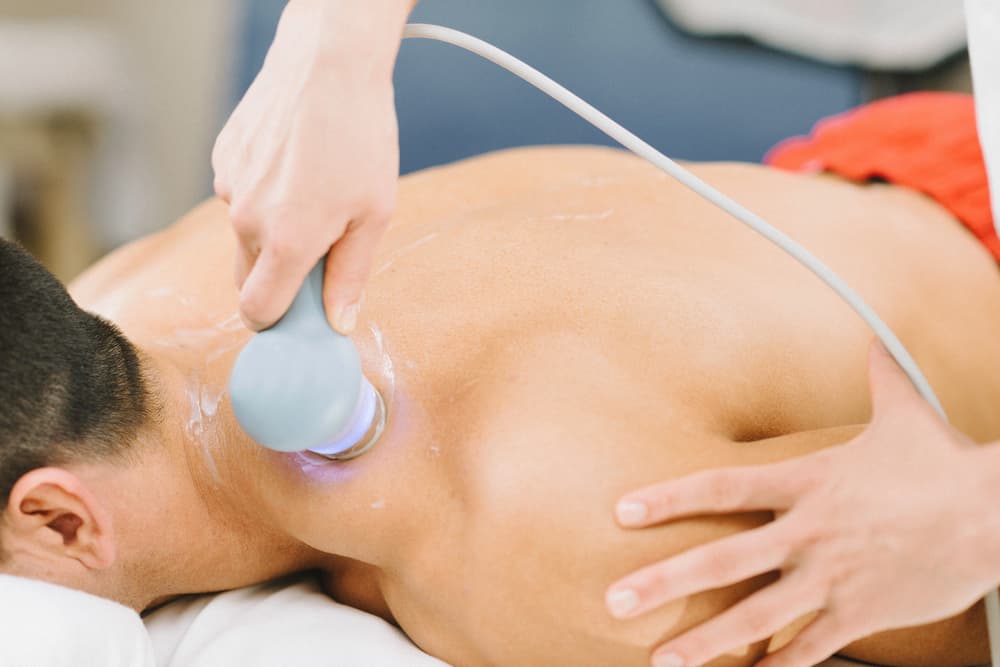Ultrasound therapy utilizes high-frequency sound waves to stimulate tissues beneath the skin’s surface. We offer two types of ultrasound:
- Thermal ultrasonography, which causes tissues to vibrate and heat up;
- Mechanical ultrasound waves, which create pressure changes in tissue fluids. It is also known as cavitation ultrasound therapy.
Our physiotherapists employ both thermal and mechanical ultrasound techniques to target various health issues, including:
- Muscle, joint, and ligament swelling: Ultrasound therapy helps reduce swelling and inflammation, promoting faster recovery.
- Stone fragmentation: We utilize ultrasound to break down stony deposits or tissue, aiding in the treatment of conditions such as kidney stones and gallstones.
- Improved drug delivery: Methods like high-intensity focused ultrasound (HIFU) help us deliver therapeutic drugs to specific tissues more precisely, which makes them work better.

Ultrasound therapy is non-invasive, painless, and typically well-tolerated. Most sessions last around 15–30 minutes, and patients often notice improvements after a few treatments. This therapy can be combined with other treatments for a comprehensive approach to healing.
Get a free online consultation
If you’re seeking a non-invasive solution for pain relief and tissue restoration, contact us today to schedule a no-obligation consultation. Discover how ultrasound therapy can be part of your personalized treatment plan.

Medical Advisor, Swiss Medica doctor
Ready to Explore More?
Discover the full potential of stem cells and dive into additional insightful articles.
List of References
Ebadi S, Henschke N, Forogh B, Nakhostin Ansari N, van Tulder MW, Babaei-Ghazani A, Fallah E. Therapeutic ultrasound for chronic low back pain. Cochrane Database Syst Rev. 2020 Jul 5;7(7):CD009169. doi: 10.1002/14651858 https://pubmed.ncbi.nlm.nih.gov/32623724/